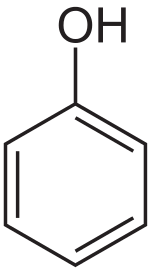Phenols
Phenols occur in surface waters from discharges of industrial effluents, especially from the thermal processing of coal, from petroleum refineries, and from the production of synthetic fabrics. Phenols are either monobasic (e.g. phenol, cresol, naphtol, xylenol) or polybasic (e.g. pyrocatechol, resorcine, hydroquinone, pyrogallol, floroglucin).
Phenols can give an unacceptable taint to water and fish, especially chlorophenols which are formed from the chlorination of phenols. The maximum concentrations admissible for fish culture are 0.001 mg per litre for chlorophenol, 0.003 mg per litre for cresol, 0.004 mg per litre for resorcine, and 0.001 mg per litre for hydroquinone. Concentrations of 0.1 mg of phenols per litre of water and 0.02 mg of chlorophenols per litre of water are high enough to cause changes in the flavour of fish flesh. Prolonged exposure to a concentration of 0.2 mg of phenols per litre of water was observed to cause fish to migrate out of the catchment area of a polluted watercourse. Based on the lethal concentrations for fish, the different phenol compounds can be ranked as follows: hydroquinone (0.2 mg per litre), naphthols (2 to 4 mg per litre), phenol, cresol, pyrocatechol and xylenol (2 to 20 mg per litre), resorcine and pyrogallol (10 to 50 mg per litre), floroglucin (400 to 600 mg per litre).
Phenols are anaesthetics which affect the central nervous system. The clinical signs of intoxication are characterized by increased activity and irritability, leaping out of the water, loss of balance and muscular spasms.
The post-mortem appearance include a conspicuous whitening of the skin which is heavily coated with mucus; at high temperature this may be accompanied by haemorrhages on the under side of the body. Long exposure to low concentrations leads to dystrophic to necrobiotic changes in the brain, parenchymatous organs, circulation system and gills.


